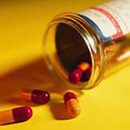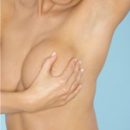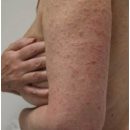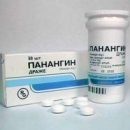Sugar diabetes cunning with its complications. Most of them begin to gradually, and after 10-15 years, it is very difficult to cope with them from the beginning of the disease. Endocrinologist N.G. Buzova talks about the main complications of diabetes and how to avoid them.
Content
Diabetes cunning is that its complications initially do not show themselves, but after 10–15 years from the beginning of the disease cope with them is very difficult. Therefore, it is important to constantly control the blood sugar, seeking close to the norm.
First of all, the retina suffers, the blood circulation is disturbed in the smallest vessels of the eye dna - development of diabetic retinopathy develops. And in the first stages, a person does not feel this - visual acuity is not reduced. Therefore, each sick diabetes must visit the oculist at least 1 time per year.
In time, noticing signs of diabetic retinopathy, you can assign treatment: first of all to normalize blood sugar levels. If necessary, with the help of a laser, the modified sections of the retina are migrated, which makes it possible to prevent the progression of the process.
Diabetes develop diabetic nephropathy. Kidney is a filter that removes harmful substances from the body with urine, and the necessary leaves. In the normal state, the filter does not skip the protein, since this is the desired substance. In the development of nephropathy, protein appears in the urine. Therefore, each patient should take the urine analysis for at least once a year to determine the protein (for example, a general analysis). It is done in any clinic. With the further development of diabetic nephropathy, arterial pressure can increase, which in itself will adversely affect the work of the kidneys.
Defeat of the cardiovascular system
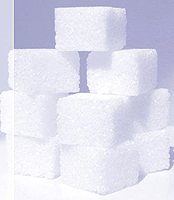 Diabetes very often accompany the defeat of the cardiovascular system (arterial hypertension, ischemic heart disease). All this is the manifestation of atherosclerosis, which on the background of diabetes mellitus can develop faster and lead to more serious consequences - infarction, strokes. Therefore, diabetics, especially the elderly, must be followed by arterial pressure, to measure it every day. Systolic (upper) pressure should not exceed 130 mm RT. Art., and diastolic (lower) - 85 mm RT. Art. A good effect to normalize the pressure can give a reduction in excess weight, salt limit in food (not more than 1 chain. spoons per day). If it does not manage to normalize the pressure, the doctor will prescribe drugs. Most likely, these pills will have to take for life not only with high blood pressure numbers to reduce it, but also with normal numbers in order for it to be improved.
Diabetes very often accompany the defeat of the cardiovascular system (arterial hypertension, ischemic heart disease). All this is the manifestation of atherosclerosis, which on the background of diabetes mellitus can develop faster and lead to more serious consequences - infarction, strokes. Therefore, diabetics, especially the elderly, must be followed by arterial pressure, to measure it every day. Systolic (upper) pressure should not exceed 130 mm RT. Art., and diastolic (lower) - 85 mm RT. Art. A good effect to normalize the pressure can give a reduction in excess weight, salt limit in food (not more than 1 chain. spoons per day). If it does not manage to normalize the pressure, the doctor will prescribe drugs. Most likely, these pills will have to take for life not only with high blood pressure numbers to reduce it, but also with normal numbers in order for it to be improved.
It is also necessary to regularly hand over a biochemical blood test for determining cholesterol and triglyceride. The level of total cholesterol should be below 5.2 mmol / l and in no case exceed 6 mmol / l. Currently, there are devices for home self-control, which allow both sugar in the blood, and cholesterol levels, for example «Accitrate GC». The level of triglycerides should be below 1.7 mmol / l (not exceed 2.2 mmol / l). To reduce the level of these indicators, it is primarily necessary to dramatically limit the use of products containing a large amount of animal fats: butter, sour cream, fatty milk (more than 3%) and cottage cheese (more than 4%), cheeses (more than 30% fat), fatty meat, Sub-products (liver, kidneys, brains), sausages, caviar, cakes, cakes, baking, egg yolks. Sometimes it is possible to reduce fat metrics to the required values.
In diabetes mellitus, the nerves are defeated, which is called diabetic neuropathy. It can happen in any type of diabetes. The defeat of large vessels, mainly characteristic of older people suffering from type II diabetes. The defeat of the lower extremities in the form of pain of different character, a feeling of burning, «Running goosebies», tingling, knocking stop. For diabetic neuropathy, a decrease in all types of sensitivity - pain, temperature is very dangerous. Skin injuries can occur when the barefoot has been walking if pebel or sand got into shoes, when wearing incorrectly selected shoes, improper handling of nails and corns.
With diabetes mellitus, high risk of gangrene feet and, as a result, limb amputation. Every patient should know how to reduce the risk.
You can not use when caring for nails and leather stops with no sharp objects: scissors, corn knives, razor blades, tongs. This is one of the most frequent causes of injury, especially since painful sensitivity is reduced.
You can only handle nails using a saw. The edge of the nail must be poured, creating a semicircular shape.
 If the legs are frown, you can not warm them with the help of the heating, electric heating devices or steam heating batteries. Temperature sensitivity reduced, and man does not feel burn. It's better to wear warm socks without tight rubber bands and watch them not to be shot down in shoes.
If the legs are frown, you can not warm them with the help of the heating, electric heating devices or steam heating batteries. Temperature sensitivity reduced, and man does not feel burn. It's better to wear warm socks without tight rubber bands and watch them not to be shot down in shoes.
For the same reason, it is impossible to take hot foot baths (the water temperature should not be higher than 40°WITH).
It is not recommended to walk barefoot, because at the same time the danger of injury and infection. On the beach you need to wear bathing slippers and protect your feet in every way from sunburn.
Refuse an uncomfortable, gouring, roll-in shoes and do not wear high-heeled shoes. Never wear shoes on barefoot. Be careful with new shoes: For the first time you wear it no more than 1 hour and in no case swear smaller in size. Also not recommended open shoes, especially sandals or sandals with a strap passing between your fingers. Shoes should be spacious, with soft insole. Always check the shoes before you wear it: if there were any extraneous items that could face the leg, whether the insole was wrapped, did not appear with carnations.
If there are corn on the legs, do not try to get rid of them with a corpute plaster or special ointments and liquids - these means contain substances damaging skin.
The most appropriate means for removing calluses and sections of excessive skin of the skin is PEMZA. It is necessary to use it during the washing of the legs and do not try to remove corn over one reception. It is necessary to wash your feet daily, after washing dry, not rubbing, and the skin is wet, especially in the interfallated intervals. Also daily need to change socks or stockings.
When processing injuries, it is impossible to use iodine, green, alcohol and manganese. They are contraindicated, as worsening wound healing, besides, they can cause a burn, and also paint the wound. You can not use the usual leucoplasty to close damage.
You can not smoke - it worsens blood supply.
Every day you need to carefully examine the feet, especially the plantar surface. To do this, you can use the mirror installed on the floor, or ask relatives. This allows timely to detect wrecks, cracks, scuffs.
With dry skin of the legs, it is necessary to lubricate it (but not in the interfallated intervals) with fatty cream or butter.
Even minor damage - the reason to appear to the doctor, however, first aid must be able to provide yourself independently. The wound or a crack discovered during the examination of the foot must be washed with a disinfectant solution: a solution of dioxidine can be used (there is in any pharmacy), furacin or hydrogen peroxide. Washed wounds need to be closed with a sterile bandage or for a while with a bactericidal plaster.

